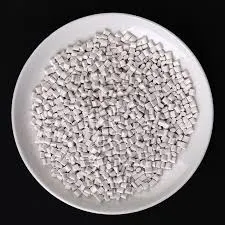Understanding Sulfamic Acid Properties, Uses, and Safety
Sulfamic acid, with the chemical formula H₃NSO₃, is an important sulfonic acid that has garnered significant attention in various industrial applications. As a white crystalline solid, it is odorless and highly soluble in water, making it a versatile compound in both chemistry and manufacturing processes. Its unique properties and functionalities make sulfamic acid valuable in a range of sectors, including cleaning, pharmaceuticals, and analytical chemistry.
Chemical Properties
Sulfamic acid is characterized by its strong acidity, being more stable than other acids like sulfuric acid. It has a pKa value of approximately 1, which indicates its high proton-donating ability. The presence of both an amino group (-NH₂) and a sulfonic acid group (-SO₃H) in its molecular structure gives sulfamic acid its unique dual functionality. This allows it to act as both a source of protons and a powerful nucleophile in various chemical reactions.
Moreover, sulfamic acid is non-volatile and safely stable under standard conditions, minimizing risks of exposure to fumes, unlike some other stronger acids. This stability contributes to its preferred usage in environments that require rigorous safety standards.
Industrial Applications
Sulfamic acid is extensively used as a descaling agent in household and industrial cleaning products. Its ability to effectively remove limescale and mineral deposits makes it a popular choice for treating water systems and cleaning household appliances like kettles and dishwashers. The compound can effectively dissolve calcium carbonate, leaving systems clean and operational.
In the realm of pharmaceuticals, sulfamic acid serves as an intermediate chemical in the synthesis of various medicines. Its ability to introduce sulfonamide groups into organic molecules makes it essential in the production of certain antibiotics and sulfa drugs. Additionally, sulfamic acid is utilized in the manufacturing of herbicides and dyes due to its functional versatility.
sulfamic acid

In analytical chemistry, sulfamic acid is employed in titrimetric analysis to determine the concentration of various metal ions. It can react with specific metal ions to form insoluble precipitates, allowing chemists to quantify the presence of these elements in a sample.
Safety and Handling
While sulfamic acid is less hazardous than many other acids, handling it requires caution. It can cause skin and eye irritation, so appropriate personal protective equipment (PPE) such as gloves and goggles should be worn during its use. When dissolved in water, sulfamic acid generates heat, which suggests that adding it to water should be done slowly to avoid splashing and exothermic reactions.
In addition to personal safety measures, proper storage is crucial. Sulfamic acid should be kept in a cool, dry place, away from incompatible substances such as strong oxidizers and bases. It is also important to follow local regulations regarding chemical disposal to minimize environmental impact.
Conclusion
Sulfamic acid is a multifaceted compound that plays a significant role in various industrial processes, from effective cleaning solutions to pharmaceuticals and analytical applications. Its stability, solubility, and unique chemical properties make it a preferred choice in many formulations and reactions. However, as with any chemical substance, it is essential to handle sulfamic acid safely and responsibly to mitigate any risks associated with its use. With continued advancements in technology and chemistry, the applications of sulfamic acid may expand further, solidifying its status as a vital chemical in numerous industries.
In summary, sulfamic acid’s composition and characteristics not only highlight its importance in existing applications but also pave the way for future innovations in science and industry.

